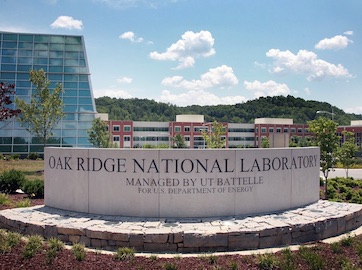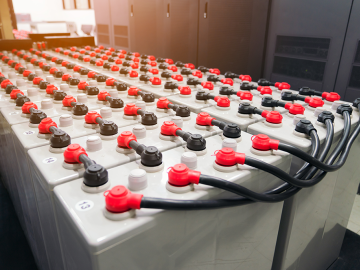Filter Results
Related Organization
- Biological and Environmental Systems Science Directorate (29)
- Computing and Computational Sciences Directorate (39)
- Energy Science and Technology Directorate
(229)
- Fusion and Fission Energy and Science Directorate (24)
- Information Technology Services Directorate (3)
- Isotope Science and Enrichment Directorate (7)
- National Security Sciences Directorate (20)
- Neutron Sciences Directorate (11)
- Physical Sciences Directorate
(138)
- User Facilities (28)
Researcher
- Ilias Belharouak
- Yong Chae Lim
- Zhili Feng
- Ali Abouimrane
- Jian Chen
- Rangasayee Kannan
- Ruhul Amin
- Wei Zhang
- Adam Stevens
- Brian Post
- Bryan Lim
- Dali Wang
- Dave Willis
- David L Wood III
- Georgios Polyzos
- Hongbin Sun
- Jaswinder Sharma
- Jiheon Jun
- Junbin Choi
- Luke Chapman
- Lu Yu
- Marm Dixit
- Peeyush Nandwana
- Pradeep Ramuhalli
- Priyanshi Agrawal
- Roger G Miller
- Ryan Dehoff
- Sarah Graham
- Sudarsanam Babu
- Sydney Murray III
- Tomas Grejtak
- Vasilis Tzoganis
- Vasiliy Morozov
- William Peter
- Yaocai Bai
- Yiyu Wang
- Yukinori Yamamoto
- Yun Liu
- Zhijia Du

A finite element approach integrated with a novel constitute model to predict phase change, residual stresses and part deformation.

We presented a novel apparatus and method for laser beam position detection and pointing stabilization using analog position-sensitive diodes (PSDs).

This invention is directed to a machine leaning methodology to quantify the association of a set of input variables to a set of output variables, specifically for the one-to-many scenarios in which the output exhibits a range of variations under the same replicated input

The ORNL invention addresses the challenge of poor mechanical properties of dry processed electrodes, improves their electrical properties, while improving their electrochemical performance.

A new nanostructured bainitic steel with accelerated kinetics for bainite formation at 200 C was designed using a coupled CALPHAD, machine learning, and data mining approach.

High and ultra-high vacuum applications require seals that do not allow leaks. O-rings can break down over time, due to aging and exposure to radiation. Metallic seals can damage sealing surfaces, making replacement of the original seal very difficult.

ORNL has developed a new hydrothermal synthesis route to generate high quality battery cathode precursors. The new route offers excellent compositional control, homogenous spherical morphologies, and an ammonia-free co-precipitation process.

The technologies provide a coating method to produce corrosion resistant and electrically conductive coating layer on metallic bipolar plates for hydrogen fuel cell and hydrogen electrolyzer applications.

Sodium-ion batteries are a promising candidate to replace lithium-ion batteries for large-scale energy storage system because of their cost and safety benefits.

Knowing the state of charge of lithium-ion batteries, used to power applications from electric vehicles to medical diagnostic equipment, is critical for long-term battery operation.

